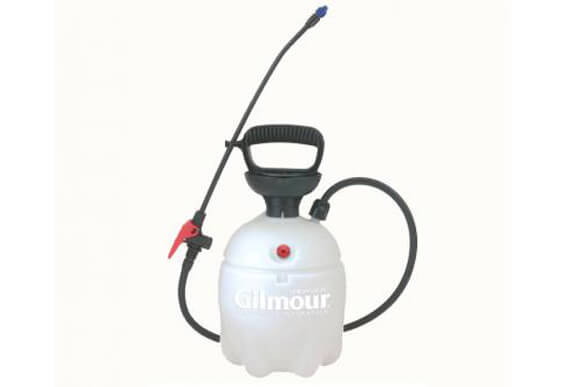
Wet applications make using DE a breeze; it is distributed evenly and in just the right amount. Because wet applications function best for warm and dry locations, there may be some limits to this method's application. While not the perfect way to apply for all situations, it is certainly one of the easiest.
Also, if you have a respiratory condition such as asthma, you may want to consider a wet application for DE before anything else.
If you are using DE to treat your garden or areas outside your home, you can mix DE and water into a spray receptacle like the Gilmour 1 Gallon Sprayer.
Step 1:
Using a funnel, and measuring spoon, measure 8-10 tbsp of diatomaceous earth and put it in a 1-gallon sprayer. Screw on the lid or nozzle and give it a shake.
Step 2:
After you have identified the area of your home that needs DE and if it is both dry and warm, you can begin applying your DE mixture. Spray once or twice and move on.
Step 3:
If you are using a spray bottle that that has spray and squirt settings, choose spray. Holding the nozzle about 1' to 2' from the area, spray once or twice, and move to the next area.
Step 4:
Allow for the water to evaporate. You should have a thin and evenly spread DE resembling dust.
Step 5:
Reapply monthly or after heavy rainfall.
If you would like to learn more about the Gilmour Sprayer, you can buy one here.


